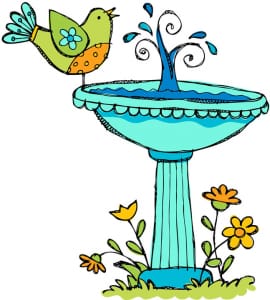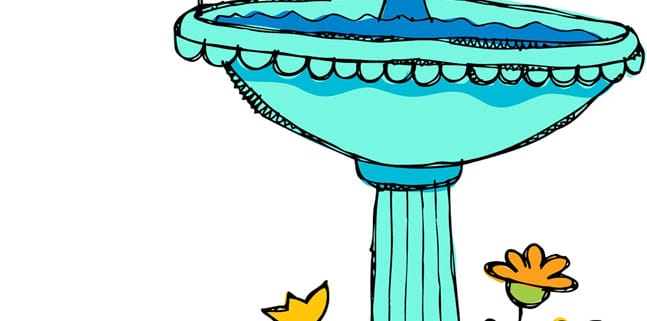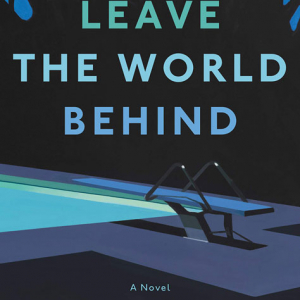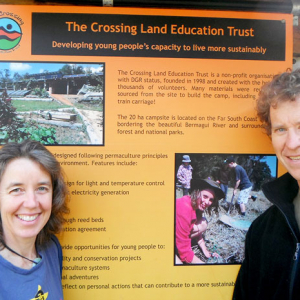Birds and bees
 This is a story about the birds and the bees. No, not that one, but one about our fine feathered friends and those helpful little pollinators and collectors of nectar that we often forget about in our gardens.
This is a story about the birds and the bees. No, not that one, but one about our fine feathered friends and those helpful little pollinators and collectors of nectar that we often forget about in our gardens.
We, as gardeners, tend to overlook one of the most crucial elements of gardening when designing a space, and that is to provide food and habitat for birds and bees. In attracting bees to your garden, we must understand they do most of the pollinating of our fruit trees and vegetables. It is therefore essential that we provide plants that will attract them, and then in turn, after visiting our flowers, they move on to the flowers and blossoms of fruit trees and vegetables.
Bees are particularly attracted to plants that have blue, purple, orange, and yellow in their flower colour. Lavender, agastache, echinacea, rudbeckia, and borage are some of their favourites, and planting these around the perimeter of a vegetable garden or near an orchard will encourage them to forage, and in turn move on to pollinate those areas.
These tireless little workers can travel several kilometres to forage, and like everything and everyone that works hard, are always looking for a drink. It’s not hard to overlook the need to provide water for them. The provision of a water vessel is paramount to their survival, and every endeavour to keep it topped up is as important as watering the plants. Bees can easily drown in an incorrectly shaped bowl, so one with a ‘landing pad’ where they can land and walk down to the water is a help. There are some locally made bird baths that have been especially designed to cater for bees.
Attracting birds to our gardens is another story. Apart from the nectar feeders, like eastern spinebills, most birds are just visitors to our gardens, and apart from cleaning up insect pests, do not do much in the pollination process. There is a distinct pecking order amongst birds, and the selection of certain plants will avail the smaller birds of somewhere to hide from the larger, like wattle birds, who can be bullies. Plants like grevillea, hakea, and westringea amongst the natives, and camellia, hydrangea, and viburnum in the introduced species all work well.
Water again is crucial in their survival, and a bird bath, similar or the same for the bees, will help. Small birds can also drown in the bath if the sides are too steep. Planting near the bird bath can help them find security, but not too close, as cats may hide amongst foliage in readiness to attack.
Birds all have different diets, so by including a wide range of species in the garden, from nectar-producing plants through to seed- or fruit-bearing plants, will provide food for all categories of birds. Feeding native birds with shop-bought seed is not recommended, as many of the seed types do not suit all birds and can be detrimental to their health. In some cases, they can lose the ability or need to forage. If the artificial feeding stops, birds that have become reliant on you feeding them can starve.
Call into your local nursery for more advice on looking after these very much needed little friends to our gardens. I look forward to keeping you up to date on all things gardening and wish you a
happy 2021.


